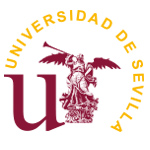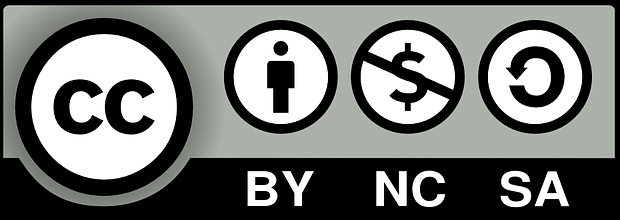Mobile learning en las diferentes etapas educativas. Una revisión bibliométrica de la producción científica en Scopus (2007-2017)
DOI:
https://doi.org/10.12795/revistafuentes.2020.v22.i1.04Keywords:
mobile learning, dispositivos móviles, sistema educativo, estudio bibliométrico, producción científica, mobile devices, education system, bibliometric study, scientific productionAbstract
Resumen
Los dispositivos móviles han irrumpido con fuerza en la sociedad y su aplicación en el ámbito educativo es una de sus consecuencias. La metodología mobile learning se posibilita como un recurso para la enseñanza-aprendizaje que puede traer consigo múltiples beneficios y en este estudio se ha realizado una revisión sobre la producción científica del mobile learning en las diferentes etapas educativas entre los años 2007 y 2017. Para ello, se ha seguido una metodología propia de los estudios bibliométricos a partir del establecimiento de una serie de palabras clave para su consulta en la base de datos Scopus (n = 697). De modo que atendiendo a estudios previos se han analizado nueve variables relativas a: 1) área científica; 2) número de publicaciones por año; 3) tipología del documento; 4) procedencia de los archivos; 5) palabras clave relacionadas; 6) instituciones; 7) países; 8) autores con más producción científica y 9) artículos más citados. Respecto a los resultados obtenidos, se ha determinado el creciente interés de la temática en los años 2015, 2016 y 2017, donde se concentra la mayor parte de la literatura científica publicada. Sin embargo, predomina la producción en la etapa de Educación Superior sobre las demás. Finalmente, se constata que aunque los informes apuntan a la implementación del mobile learning en menos de un año, todavía queda camino por recorrer en la investigación enfocada a etapas educativas iniciales y medias.
Abstract
Mobile devices have burst into society and their application in education is one of the consequences. Mobile learning methodology is a teaching-learning resource that can bring multiple benefits. In this study, a review was conducted on the scientific production of mobile learning in the different educational stages between 2007 and 2017. To this end, a methodology specific to bibliometric studies has been followed, based on the establishment of a series of key words for consultation in the Scopus database (n = 697). So, according to previous studies, nine variables have been analyzed in relation to: 1) scientific area; 2) number of publications per year; 3) typology of the document; 4) source of the archives; 5) related keywords; 6) institutions; 7) countries; 8) authors with more scientific production and 9) most cited articles. Regarding the results obtained, the growing interest of the subject in the years 2015, 2016 and 2017 has been determined, where most of the published scientific literature is concentrated. However, production in the Higher Education stage predominates over the others. Finally, it is noted that although reports point to the implementation of mobile learning in less than a year, there is still some way to go in research focused on initial and medium educational stages.
Downloads
References
Adams, S., Cummins, M., Davis, A., Freeman, A., Hall, C. y Ananthanarayanan, V. (2017). NMC Horizon Report: 2017 Higher Education Edition. Austin, Texas: The New Media Consortium.
Aznar, I., Cáceres, M.P. y Romero, J.M. (2018). Indicadores de calidad para evaluar buenas prácticas docentes de «mobile learning» en Educación Superior. Education in the Knowledge Society (EKS), 19(3), 53-68. DOI:10.14201/eks20181935368
Brazuelo, F. y Gallego D.J. (2014). Estado del Mobile Learning en España. Educar em Revista, 4, 99-128.
Corlett, D., Sharples, M., Bull, S. y Chan, T. (2005). Evaluation of a mobile learning organiser for university students. Journal of Computer Assisted learning, 21, 162–170.
Glanzel, W. y Schoepflin, U. (1999). A bibliometric study of reference literature in the sciences and social sciences. Information processing & management, 35(1), 31-44.
González, R. y Gutiérrez, A. (2017). Competencias Mediática y Digital del profesorado e integración curricular de las tecnologías digitales. Revista Fuentes, 19(2), 57-67. DOI:10.12795/revistafuentes.2016.19.2.04
Han, I. y Shin, W.S. (2016). The use of a mobile learning management system and academic achievement of online students. Computers & Education, 102, 79-89. doi:10.1016/j.compedu.2016.07.003
INTEF (2017). Resumen informe Horizon: edición 2017 educación superior. Madrid: Ministerio de Educación, Cultura y Deporte.
Jiménez, D., Mora, M. y Cuadros, R. (2016). La importancia de las nuevas tecnologías en el proceso educativo. Propuesta didáctica TIC para ELE: mELEndien7dias. Revista Fuentes, 18(2), 209-233. DOI:10.12795/revistafuentes.2016.18.2.07
Johnson, L., Adams, S., & Cummins, M. (2012). The NMC Horizon Report: 2012 Higher Education Edition. Austin, Texas: The New Media Consortium.
Johnson, L., Adams, S., Cummins, M., Estrada, V., Freeman, A. y Hall, C. (2016). NMC Horizon Report: 2016 Higher Education Edition. Austin, Texas: The New Media Consortium.
Johnson, L., Adams, S., Cummins, M., Estrada, V., Freeman, A. y Ludgate, H. (2013). NMC Horizon Report: 2013 Higher Education Edition. Austin, Texas: The New Media Consortium.
Johnson, L., Adams, S., Estrada, V. y Freeman, A. (2014). NMC Horizon Report: 2014 K-12 Edition. Austin, Texas: The New Media Consortium.
Johnson, L., Adams, S., Estrada, V. y Freeman, A. (2015). NMC Horizon Report: 2015 Higher Education Edition. Austin, Texas: The New Media Consortium.
López, E., Vázquez, E. y Román, P. (2015). Análisis e implicaciones del impacto del movimiento MOOC en la comunidad científica: JCR y Scopus (2010-13). Comunicar, 22(44), 73-80. DOI:10.3916/C44-2015-08
Mengual, S., Vázquez, E. y López, E. (2017). La productividad científica sobre MOOC: aproximación bibliométrica 2012-2016 a través de SCOPUS. RIED. Revista Iberoamericana de Educación a Distancia, 20(1), 39-58. DOI:10.5944/ried.20.1.16662
O’Bannon, B.W. y Thomas, K. (2014). Teacher perceptions of using mobile phones in the classroom: Age matters!. Computers & Education, 74, 15-25. DOI:10.1016/j.compedu.2014.01.006
Price, D.J.S. (1986). Little Science, big science...and beyond. Nueva York, NY: Columbia University Press.
Ramos, A.I., Herrera, J.A. y Ramírez, M.S. (2010). Desarrollo de habilidades cognitivas con aprendizaje móvil: un estudio de casos. Comunicar, 17(34), 201-209.
Rodríguez-García, A.M. y Martínez, N. (2017). La competencia digital en la base de Scopus: un estudio de metaanálisis. En J. Silva (Ed.), EDUcación y TECnología: una mirada desde la Investigación e Innovación. Actas del XX Congreso Internacional EDUTEC 2017 (pp. 676-678). Chile: Centro de Innovación e Investigación en Educación y Tecnología (CIIET) de la Universidad de Santiago de Chile.
Romero, J.M. y Rodríguez-García, A.M. (2017). Digitalización de recursos patrimoniales mediante códigos QR: los dispositivos digitales móviles para la difusión cultural y artística en educación. En L. Bocanegra y A. García (Eds.), Con la Red / En la Red. Creación, Investigación y Comunicación Cultural y Artística en la era Internet (pp. 595-612). Granada: Universidad de Granada
Sharples, M., Corlett, D. y Westmancott, O. (2002). The Design and Implementation of a Mobile Learning Resource. Personal and Ubiquitous Computing, 6, 220–234
Urrútia, G. y Bonfill, X. (2010). Declaración PRISMA: una propuesta para mejorar la publicación de revisiones sistemáticas y metaanálisis. Medicina Clínica, 135(11), 507-511.
Zydney, J.M. y Warner, Z. (2015). Mobile apps for science learning: Review of research. Computers & Education, 94, 1-17. doi:10.1016/j.compedu.2015.11.001
Downloads
Published
How to Cite
Issue
Section
License
Copyright (c) 2020 Revista Fuentes

This work is licensed under a Creative Commons Attribution-NonCommercial-ShareAlike 4.0 International License.
Authors who publish in this journal accept the following conditions:
Authors conserve the copyrights and cede to the journal the right for first publication, with the work registered with the attribution licence of Creative Commons, which allows third parties to use the published work as long as they mention the authorship and the first publication in this journal.
The authors may make other independent and additional contractual agreements for the non-exclusive distribution of the version of the article published in this journal (e.g. include it an institutional repository or publish it in a book) as long as it clearly indicates that the work was first published in this journal.
Authors are allowed and indeed recommended to publish their work on the internet (for example on institutional or personal pages) before and during the revision and publication process, because it can lead to productive exchanges and greater and faster dissemination of the published work (see The Effect of Open Access).
Accepted 2020-02-17
Published 2020-06-08
- Abstract 892
- PDF (Español (España)) 564














